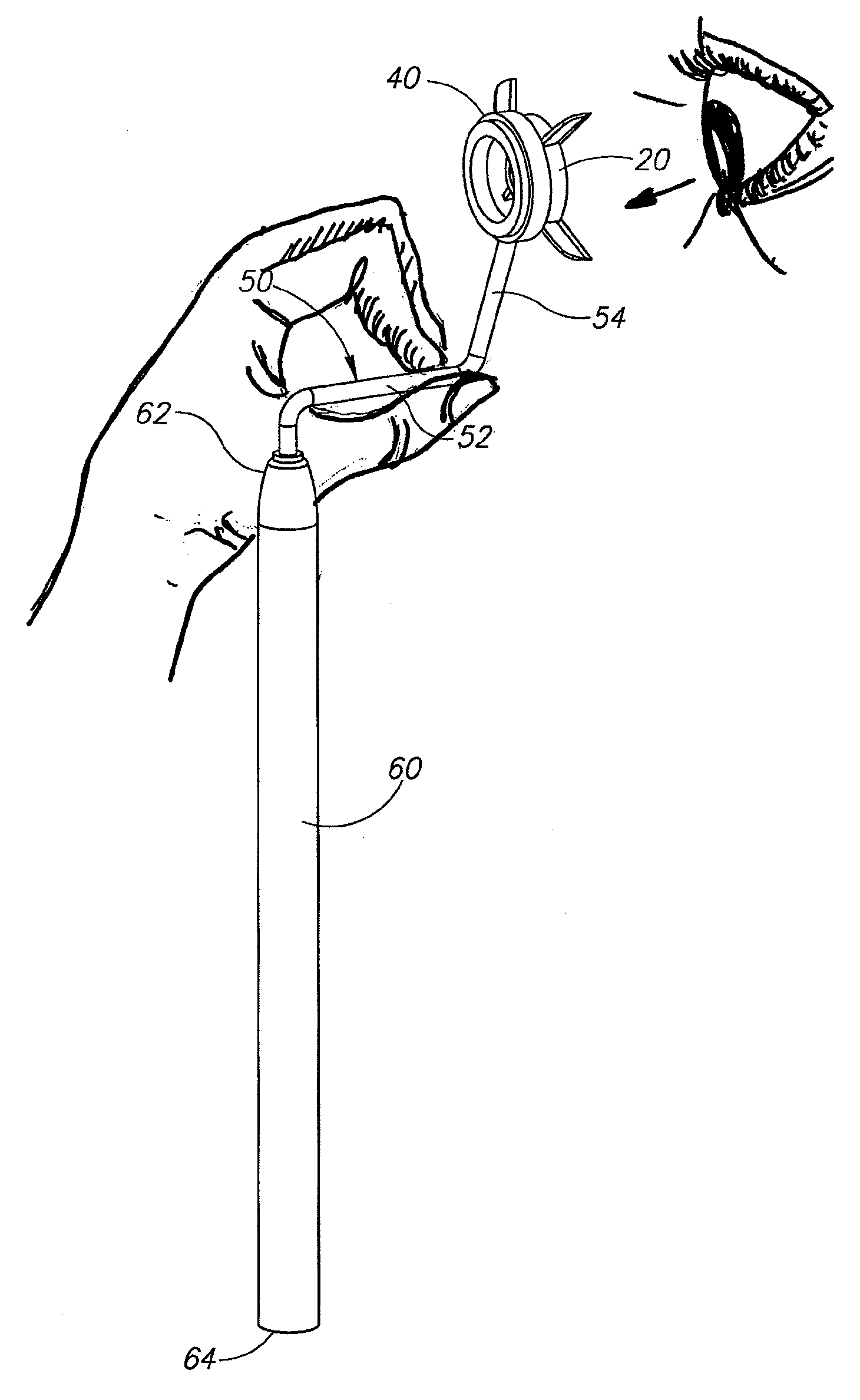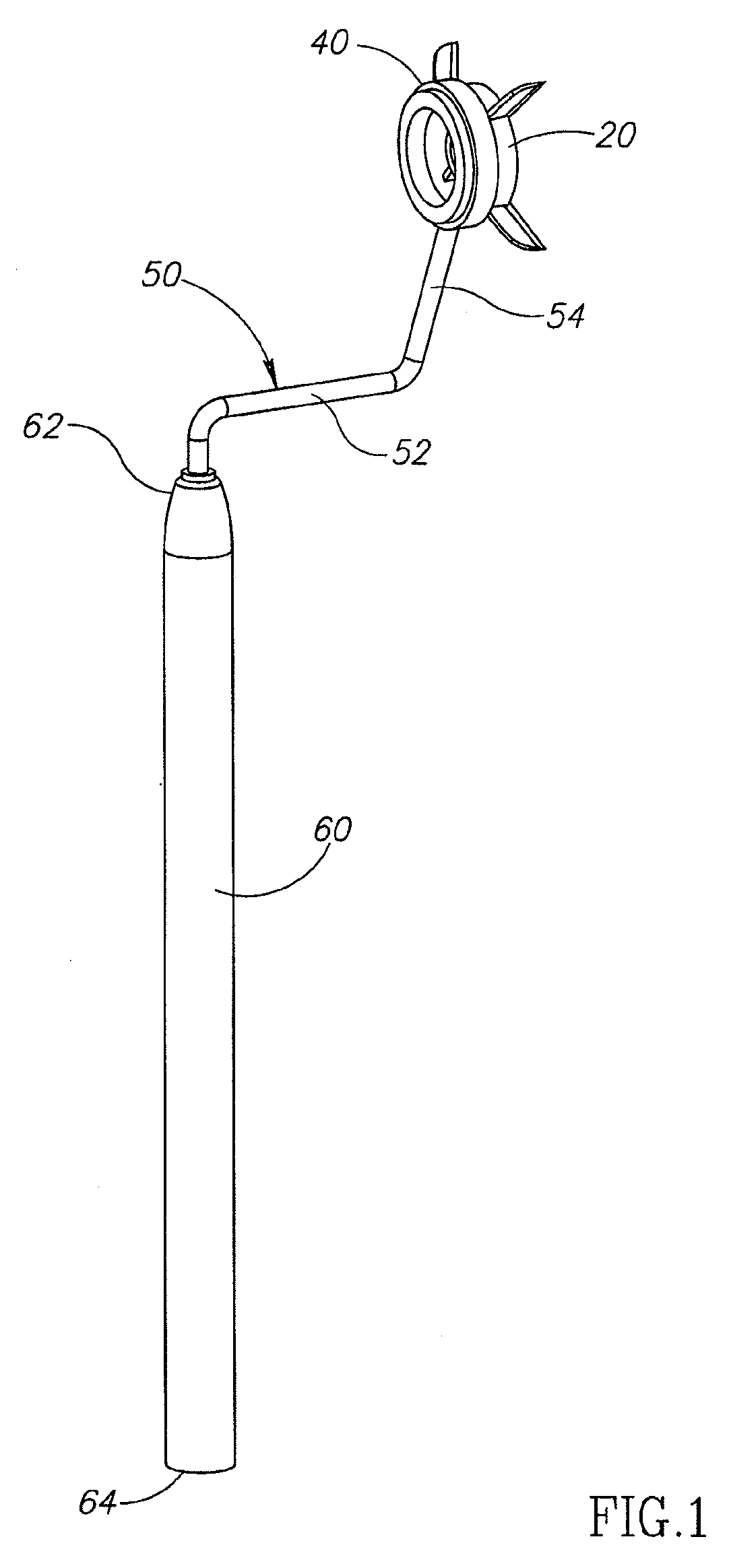System and method for corneal astigmatic axis marking
a marking system and astigmatic axis technology, applied in the field of ocular marking system and method, can solve the problems of blurred image, introduction of several significant errors, and ultimately blindness, and achieve the effect of improving the outcome of astigmatic refractive surgery
- Summary
- Abstract
- Description
- Claims
- Application Information
AI Technical Summary
Benefits of technology
Problems solved by technology
Method used
Image
Examples
Embodiment Construction
[0029]A description of the preferred embodiments of the present invention is presented with reference to FIGS. 1-9. FIG. 1 shows one embodiment of a corneal marking device 10 of the present invention. The corneal marking device 10 includes a corneal marker 20, a ring gauge 40, a handle 50 and a weighted stem 60. The preferred weighted stem 60 includes a proximate end 62 located near the handle 50 and a distal end 62 located remote to the handle 50. The stem 60 may be of varying lengths or thickness, but is preferably of sufficient weight to facilitate orientation of the handle 50 to a patient's eye under examination when in operation, but not so heavy to be uncomfortable for the surgeon during operation of the corneal marking device 10.
[0030]The handle 50 is preferably sized to fit comfortably within a surgeon's hand, but may be of varying lengths or thickness. The handle 50 is attached to the proximate end 62 of the stem 60 and extends away from the stem to support the corneal mark...
PUM
 Login to View More
Login to View More Abstract
Description
Claims
Application Information
 Login to View More
Login to View More - R&D
- Intellectual Property
- Life Sciences
- Materials
- Tech Scout
- Unparalleled Data Quality
- Higher Quality Content
- 60% Fewer Hallucinations
Browse by: Latest US Patents, China's latest patents, Technical Efficacy Thesaurus, Application Domain, Technology Topic, Popular Technical Reports.
© 2025 PatSnap. All rights reserved.Legal|Privacy policy|Modern Slavery Act Transparency Statement|Sitemap|About US| Contact US: help@patsnap.com



